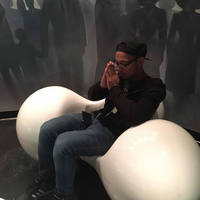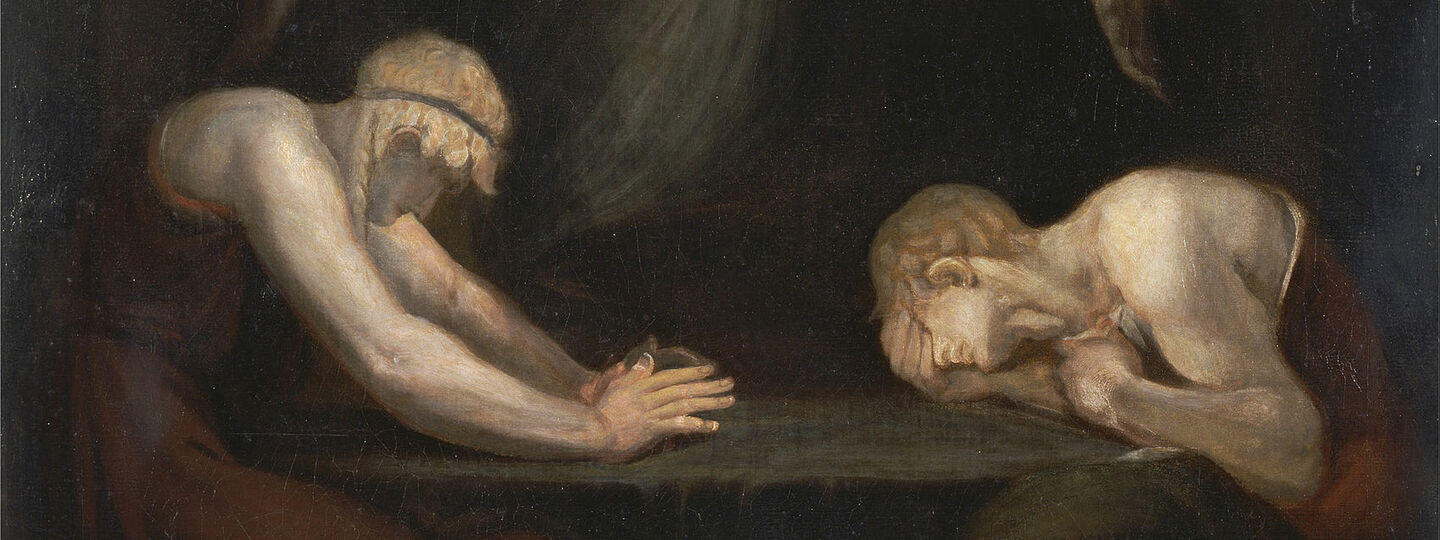
Info
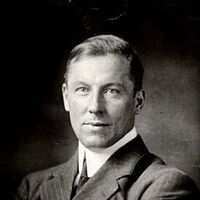
Robert William Service (January 16, 1874 – September 11, 1958) was a poet and writer who has often been called "the Bard of the Yukon". He was born in Preston, Lancashire, England and he is best known for his poems "The Shooting of Dan McGrew" and "The Cremation of Sam McGee", from his first book, Songs of a Sourdough (1907; also published as The Spell of the Yukon and Other Verses).
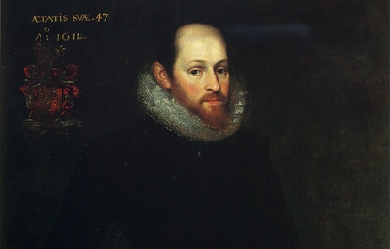

William Shakespeare (baptised 26 April 1564; died 23 April 1616) was an English poet and playwright, widely regarded as the greatest writer in the English language and the world's pre-eminent dramatist. He is often called England's national poet and the "Bard of Avon". His surviving works, including some collaborations, consist of about 38 plays, 154 sonnets, two long narrative poems, and several other poems. His plays have been translated into every major living language and are performed more often than those of any other playwright. Authorship Around 230 years after Shakespeare’s death, doubts began to be expressed about the authorship of the works attributed to him. Proposed alternative candidates include Francis Bacon, Christopher Marlowe, and Edward de Vere, 17th Earl of Oxford. Several “group theories” have also been proposed. All but a few Shakespeare scholars and literary historians consider it a fringe theory, with only a small minority of academics who believe that there is reason to question the traditional attribution, but interest in the subject, particularly the Oxfordian theory of Shakespeare authorship, continues into the 21st century.

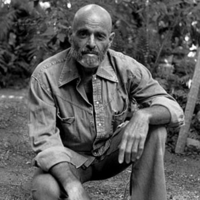
Sheldon Allan Shel Silverstein (September 25, 1930 – May 10, 1999), was an American poet, singer-songwriter, cartoonist, screenwriter, and author of children's books. He styled himself as Uncle Shelby in some works. Translated into more than 30 languages, his books have sold over 20 million copies.
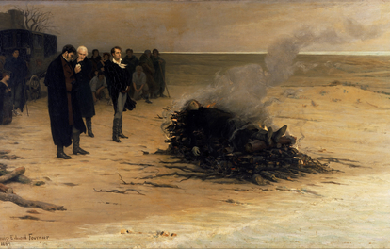
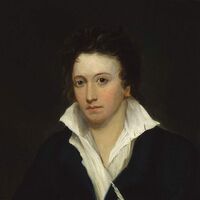
Percy Bysshe Shelley (4 August 1792 – 8 July 1822) was one of the major English Romantic poets and is critically regarded as among the finest lyric poets in the English language. Shelley was famous for his association with John Keats and Lord Byron. The novelist Mary Shelley (née Godwin) was his second wife. Shelley's unconventional life and uncompromising idealism, combined with his strong disapproving voice, made him a marginalized figure during his life, important in a fairly small circle of admirers, and opened him to criticism as well as praise afterward.
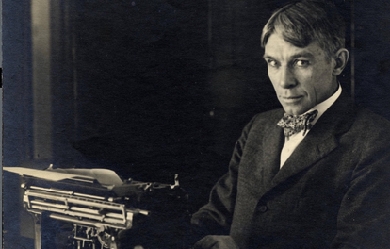
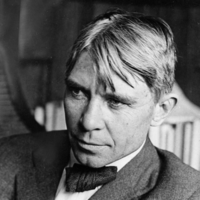
Carl Sandburg was born in Galesburg, Illinois, on January 6, 1878. His parents, August and Clara Johnson, had emigrated to America from the north of Sweden. After encountering several August Johnsons in his job for the railroad, the Sandburg's father renamed the family. The Sandburgs were very poor; Carl left school at the age of thirteen to work odd jobs, from laying bricks to dishwashing, to help support his family. At seventeen, he traveled west to Kansas as a hobo. He then served eight months in Puerto Rico during the Spanish-American war. While serving, Sandburg met a student at Lombard College, the small school located in Sandburg's hometown. The young man convinced Sandburg to enroll in Lombard after his return from the war.
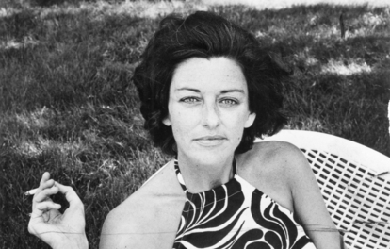
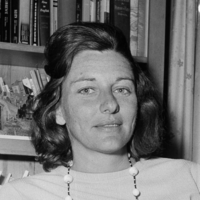
Anne Sexton (November 9, 1928, Newton, Massachusetts – October 4, 1974, Weston, Massachusetts) was an American poetese, known for her highly personal, confessional verse. She won the Pulitzer Prize for poetry in 1967. Themes of her poetry include her suicidal tendencies, long battle against depression and various intimate details from her private life, including her relationships with her husband and children. Sexton suffered from severe mental illness for much of her life, her first manic episode taking place in 1954.


Hello and welcome. I don't know what brought you to my profile, but I do hope you enjoy my few pieces. I lack form and style, and could care less about using either in my poetry to be quite frank. I write my poetry from the heart (sorry for the -true- cliché), it is my escape, and I do hope that my words can reach others. But that's enough about me, take a look at a few of my poems if you so desire and send me critiques/commentary if you feel inclined to do so. Thanks for considering viewing my page as being worth your time.
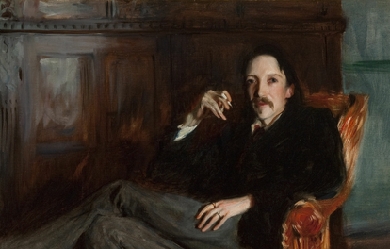
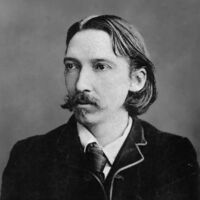
Robert Louis Balfour Stevenson (13 November 1850 – 3 December 1894) was a Scottish novelist, poet, essayist and travel writer. His best-known books include Treasure Island, Kidnapped, and Strange Case of Dr Jekyll and Mr Hyde. A literary celebrity during his lifetime, Stevenson now ranks among the 26 most translated authors in the world. He has been greatly admired by many authors, including Jorge Luis Borges, Ernest Hemingway, Rudyard Kipling, Marcel Schwob, Vladimir Nabokov, J. M. Barrie, and G. K. Chesterton, who said of him that he “seemed to pick the right word up on the point of his pen, like a man playing spillikins”.
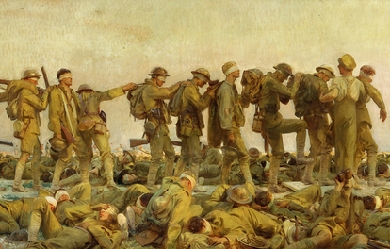
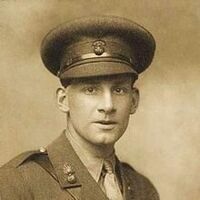
Siegfried Loraine Sassoon (8 September 1886 – 1 September 1967) was an English poet, author and soldier. Decorated for bravery on the Western Front, he became one of the leading poets of the First World War. His poetry both described the horrors of the trenches, and satirised the patriotic pretensions of those who, in Sassoon's view, were responsible for a vainglorious war. He later won acclaim for his prose work, notably his three-volume fictionalised autobiography, collectively known as the "Sherston Trilogy". Motivated by patriotism, Sassoon joined the British Army just as the threat of World War I was realised, and was in service with the Sussex Yeomanry on the day the United Kingdom declared war (4 August 1914). He broke his arm badly in a riding accident and was put out of action before even leaving England, spending the spring of 1915 convalescing.
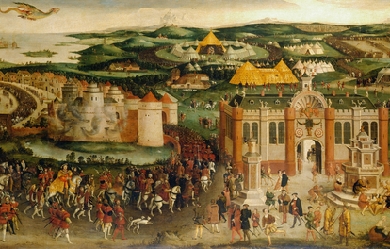
Edmund Spenser (c. 1552 – 13 January 1599) was an English poet best known for The Faerie Queene, an epic poem and fantastical allegory celebrating the Tudor dynasty and Elizabeth I. He is recognised as one of the premier craftsmen of Modern English verse in its infancy, and is considered one of the greatest poets in the English language. Edmund Spenser was born in East Smithfield, London, around the year 1552, though there is some ambiguity as to the exact date of his birth. As a young boy, he was educated in London at the Merchant Taylors' School and matriculated as a sizar at Pembroke College, Cambridge. While at Cambridge he became a friend of Gabriel Harvey and later consulted him, despite their differing views on poetry. In 1578 he became for a short time secretary to John Young, Bishop of Rochester. In 1579 he published The Shepheardes Calender and around the same time married his first wife, Machabyas Childe. In July 1580 Spenser went to Ireland in service of the newly appointed Lord Deputy, Arthur Grey, 14th Baron Grey de Wilton. When Grey was recalled to England, he stayed on in Ireland, having acquired other official posts and lands in the Munster Plantation. At some time between 1587 and 1589 he acquired his main estate at Kilcolman, near Doneraile in North Cork. Among his acquaintances in the area was Walter Raleigh, a fellow colonist. He later bought a second holding to the south, at Rennie, on a rock overlooking the river Blackwater in North Cork. Its ruins are still visible today. A short distance away grew a tree, locally known as "Spenser's Oak" until it was destroyed in a lightning strike in the 1960s. Local legend has it that he penned some of The Faerie Queene under this tree. In 1590 Spenser brought out the first three books of his most famous work, The Faerie Queene, having travelled to London to publish and promote the work, with the likely assistance of Raleigh. He was successful enough to obtain a life pension of £50 a year from the Queen. He probably hoped to secure a place at court through his poetry, but his next significant publication boldly antagonised the queen's principal secretary, Lord Burghley, through its inclusion of the satirical Mother Hubberd's Tale. He returned to Ireland. By 1594 Spenser's first wife had died, and in that year he married Elizabeth Boyle, to whom he addressed the sonnet sequence Amoretti. The marriage itself was celebrated in Epithalamion. In 1596 Spenser wrote a prose pamphlet titled, A View of the Present State of Ireland. This piece, in the form of a dialogue, circulated in manuscript, remaining unpublished until the mid-seventeenth century. It is probable that it was kept out of print during the author's lifetime because of its inflammatory content. The pamphlet argued that Ireland would never be totally 'pacified' by the English until its indigenous language and customs had been destroyed, if necessary by violence. Later on, during the Nine Years War in 1598, Spenser was driven from his home by the native Irish forces of Aodh Ó Néill. His castle at Kilcolman was burned, and Ben Jonson (who may have had private information) asserted that one of his infant children died in the blaze. In the year after being driven from his home, Spenser travelled to London, where he died aged forty-six. His coffin was carried to his grave in Westminster Abbey by other poets, who threw many pens and pieces of poetry into his grave with many tears. His second wife survived him and remarried twice. Rhyme and reason Thomas Fuller included in his Worthies of England a story that The Queen told her treasurer, William Cecil, to pay Spenser one hundred pounds for his poetry. The treasurer, however, objected that the sum was too much. She said, "Then give him what is reason". After a long while without receiving his payment, Spenser gave the Queen this quatrain on one of her progresses: I was promis'd on a time, To have a reason for my rhyme: From that time unto this season, I receiv'd nor rhyme nor reason. She immediately ordered the treasurer pay Spenser the original £100. This story seems to have attached itself to Spenser from Thomas Churchyard, who apparently had difficulty in getting payment of his pension (the only other one Elizabeth awarded to a poet). Spenser seems to have had no difficulty in receiving payment when it was due, the pension being collected for him by his publisher, Ponsonby. The Faerie Queene Spenser's masterpiece is the epic poem The Faerie Queene. The first three books of The Faerie Queene were published in 1590, and a second set of three books were published in 1596. Spenser originally indicated that he intended the poem to consist of twelve books, so the version of the poem we have today is incomplete. Despite this, it remains one of the longest poems in the English language. It is an allegorical work, and can be read (as Spenser presumably intended) on several levels of allegory, including as praise of Queen Elizabeth I. In a completely allegorical context, the poem follows several knights in an examination of several virtues. In Spenser's "A Letter of the Authors," he states that the entire epic poem is "cloudily enwrapped in allegorical devises," and that the aim behind The Faerie Queene was to “fashion a gentleman or noble person in virtuous and gentle discipline.” Shorter poems Spenser published numerous relatively short poems in the last decade of the sixteenth century, almost all of which consider love or sorrow. In 1591 he published Complaints, a collection of poems that express complaints in mournful or mocking tones. Four years later, in 1595, Spenser published Amoretti and Epithalamion. This volume contains eighty-nine sonnets commemorating his courtship of Elizabeth Boyle. In “Amoretti,” Spenser uses subtle humour and parody while praising his beloved, reworking Petrarchism in his treatment of longing for a woman. “Epithalamion,” similar to “Amoretti,” deals in part with the unease in the development of a romantic and sexual relationship. It was written for his wedding to his young bride, Elizabeth Boyle. The poem consists of 365 long lines, corresponding to the days of the year; 68 short lines, claimed to represent the sum of the 52 weeks, 12 months, and 4 seasons of the annual cycle; and 24 stanzas, corresponding to the diurnal and sidereal hours.[citation needed] Some have speculated that the attention to disquiet in general reflects Spenser’s personal anxieties at the time, as he was unable to complete his most significant work, The Faerie Queene. In the following year Spenser released "Prothalamion," a wedding song written for the daughters of a duke, allegedly in hopes to gain favor in the court. The Spenserian stanza and sonnet Spenser used a distinctive verse form, called the Spenserian stanza, in several works, including The Faerie Queene. The stanza's main meter is iambic pentameter with a final line in iambic hexameter (having six feet or stresses, known as an Alexandrine), and the rhyme scheme is ababbcbcc. He also used his own rhyme scheme for the sonnet. Influences and influenced Though Spenser was well read in classical literature, scholars have noted that his poetry does not rehash tradition, but rather is distinctly his. This individuality may have resulted, to some extent, from a lack of comprehension of the classics. Spenser strove to emulate such ancient Roman poets as Virgil and Ovid, whom he studied during his schooling, but many of his best-known works are notably divergent from those of his predecessors.[15] The language of his poetry is purposely archaic, reminiscent of earlier works such as The Canterbury Tales of Geoffrey Chaucer and Il Canzoniere of Francesco Petrarca, whom Spenser greatly admired. Spenser was called a Poets' Poet and was admired by William Wordsworth, John Keats, Lord Byron, and Alfred Lord Tennyson, among others. Walter Raleigh wrote a dedicatory sonnet to The Faerie Queene in 1590, in which he claims to admire and value Spenser’s work more so than any other in the English language. In the eighteenth century, Alexander Pope compared Spenser to “a mistress, whose faults we see, but love her with them all." A View of the Present State of Ireland n his work A View of the present State of Ireland, Spenser devises his ideas to the issues of the nation of Ireland. These views are suspected to not be his own but based on the work of his predecessor, Lord Arthur Grey de Wilton who was appointed Lord Deputy of Ireland in 1580 (Henley 19, 168-69). Lord Grey was a major figure in Ireland at the time and Spenser was influenced greatly by his ideals and his work in the country, as well as that of his fellow countrymen also living in Ireland at the time (Henley 169). The goal of this piece was to show that Ireland was in great need of reform. Spenser believed that “Ireland is a diseased portion of the State, it must first be cured and reformed, before it could be in a position to appreciate the good sound laws and blessings of the nation” (Henley 178). In A View of the present State of Ireland, Spenser categorizes the “evils” of the Irish people into three prominent categories: laws, customs, and religion (Spenser). These three elements work together in creating the disruptive and degraded people. One example given in the work is the native law system called “Brehon Law” which trumps the established law given by the English monarchy (Spenser). This system has its own court and way of dealing with infractions. It has been passed down through the generations and Spenser views this system as a native backward custom which must be destroyed. Spenser also recommended scorched earth tactics, such as he had seen used in the Desmond Rebellions, to create famine. Although it has been highly regarded as a polemical piece of prose and valued as a historical source on 16th century Ireland, the View is seen today as genocidal in intent. Spenser did express some praise for the Gaelic poetic tradition, but also used much tendentious and bogus analysis to demonstrate that the Irish were descended from barbarian Scythian stock. References Wikipedia - http://en.wikipedia.org/wiki/Edmund_Spenser
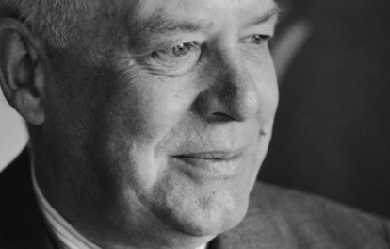
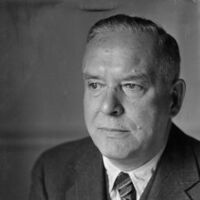
Wallace Stevens was born in Reading, Pennsylvania, on October 2, 1879. He attended Harvard University as an undergraduate from 1897 to 1900. He planned to travel to Paris as a writer, but after a working briefly as a reporter for the New York Herald Times, he decided to study law. He graduated with a degree from New York Law School in 1903 and was admitted to the U.S. Bar in 1904. He practised law in New York City until 1916. Though he had serious determination to become a successful lawyer, Stevens had several friends among the New York writers and painters in Greenwich Village, including the poets William Carlos Williams, Marianne Moore, and E. E. Cummings. In 1914, under the pseudonym "Peter Parasol," he sent a group of poems under the title "Phases" to Harriet Monroe for a war poem competition for Poetry magazine. Stevens did not win the prize, but was published by Monroe in November of that year. Stevens moved to Connecticut in 1916, having found employment at the Hartford Accident and Indemnity Co., of which he became vice president in 1934. He had began to establish an identity for himself outside the world of law and business, however, and his first book of poems, Harmonium, published in 1923, exhibited the influence of both the English Romantics and the French symbolists, an inclination to aesthetic philosophy, and a wholly original style and sensibility: exotic, whimsical, infused with the light and color of an Impressionist painting. For the next several years, Stevens focused on his business life. He began to publish new poems in 1930, however, and in the following year, Knopf published an second edition of Harmonium, which included fourteen new poems and left out three of the decidedly weaker ones. More than any other modern poet, Stevens was concerned with the transformative power of the imagination. Composing poems on his way to and from the office and in the evenings, Stevens continued to spend his days behind a desk at the office, and led a quiet, uneventful life. Though now considered one of the major American poets of the century, he did not receive widespread recognition until the publication of his Collected Poems, just a year before his death. His major works include Ideas of Order (1935), The Man With the Blue Guitar (1937), Notes Towards a Supreme Fiction (1942), and a collection of essays on poetry, The Necessary Angel (1951). Stevens died in Hartford in 1955. Poetry Harmonium (1923) Ideas of Order (1935) Owl's Clover (1936) The Man With the Blue Guitar (1937) Notes Towards a Supreme Fiction (1942) Parts of a World (1942) Esthétique du Mal (1945) Three Academic Pieces (1947) Transport to Summer (1947) Primitive Like an Orb (1948) Auroras of Autumn (1950) Collected Poems (1954) Opus Posthumous (1957) The Palm at the End of the Mind (1967) Prose The Necessary Angel (1951) Plays Three Travellers Watch the Sunrise (1916) Carlos Among the Candles (1917) References Poets.org — http://www.poets.org/poet.php/prmPID/124
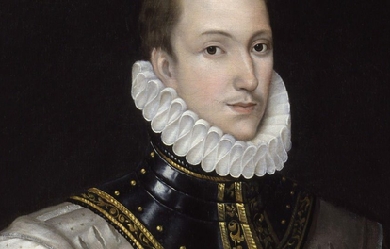
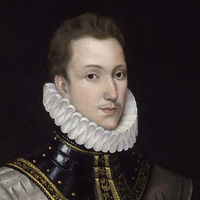
Sir Philip Sidney (30 November 1554– 17 October 1586) was an English poet, courtier, scholar, and soldier, who is remembered as one of the most prominent figures of the Elizabethan age. His works include Astrophel and Stella, The Defence of Poesy (also known as The Defence of Poetry or An Apology for Poetry), and The Countess of Pembroke’s Arcadia. Early life Born at Penshurst Place, Kent, he was the eldest son of Sir Henry Sidney and Lady Mary Dudley. His mother was the eldest daughter of John Dudley, 1st Duke of Northumberland, and the sister of Robert Dudley, 1st Earl of Leicester. His younger brother, Robert was a statesman and patron of the arts, and was created Earl of Leicester in 1618. His younger sister, Mary, married Henry Herbert, 2nd Earl of Pembroke and was a writer, translator and literary patron. Sidney dedicated his longest work, the Arcadia, to her. After her brother’s death, Mary reworked the Arcadia, which became known as The Countess of Pembroke’s Arcadia. Philip was educated at Shrewsbury School and Christ Church, Oxford. Politics and marriage In 1572, in which year he turned 18, he was elected to Parliament as Member of Parliament for Shrewsbury and in the same year travelled to France as part of the embassy to negotiate a marriage between Elizabeth I and the Duc D’Alençon. He spent the next several years in mainland Europe, moving through Germany, Italy, Poland, the Kingdom of Hungary and Austria. On these travels, he met a number of prominent European intellectuals and politicians. Returning to England in 1575, Sidney met Penelope Devereux, the future Lady Rich; though much younger, she would inspire his famous sonnet sequence of the 1580s, Astrophel and Stella. Her father, Walter Devereux, 1st Earl of Essex, is said to have planned to marry his daughter to Sidney, but he died in 1576. In England, Sidney occupied himself with politics and art. He defended his father’s administration of Ireland in a lengthy document. More seriously, he quarrelled with Edward de Vere, 17th Earl of Oxford, probably because of Sidney’s opposition to the French marriage, which de Vere championed. In the aftermath of this episode, Sidney challenged de Vere to a duel, which Elizabeth forbade. He then wrote a lengthy letter to the Queen detailing the foolishness of the French marriage. Characteristically, Elizabeth bristled at his presumption, and Sidney prudently retired from court. During a 1577 diplomatic visit to Prague, Sidney secretly visited the exiled Jesuit priest Edmund Campion. Sidney had returned to court by the middle of 1581 and in 1584 was MP for Kent. That same year Penelope Devereux was married, apparently against her will, to Lord Rich. Sidney was knighted in 1583. An early arrangement to marry Anne Cecil, daughter of Sir William Cecil and eventual wife of de Vere, had fallen through in 1571. In 1583, he married Frances, teenage daughter of Sir Francis Walsingham. In the same year, he made a visit to Oxford University with Giordano Bruno, who subsequently dedicated two books to Sidney. Literary writings His artistic contacts were more peaceful and more significant for his lasting fame. During his absence from court, he wrote Astrophel and Stella and the first draft of The Arcadia and The Defence of Poesy. Somewhat earlier, he had met Edmund Spenser, who dedicated The Shepheardes Calender to him. Other literary contacts included membership, along with his friends and fellow poets Fulke Greville, Edward Dyer, Edmund Spenser and Gabriel Harvey, of the (possibly fictitious) 'Areopagus’, a humanist endeavour to classicise English verse. Military activity Both through his family heritage and his personal experience (he was in Walsingham’s house in Paris during the St. Bartholomew’s Day Massacre), Sidney was a keenly militant Protestant. In the 1570s, he had persuaded John Casimir to consider proposals for a united Protestant effort against the Roman Catholic Church and Spain. In the early 1580s, he argued unsuccessfully for an assault on Spain itself. Promoted General of Horse in 1583, his enthusiasm for the Protestant struggle was given a free rein when he was appointed governor of Flushing in the Netherlands in 1585. In the Netherlands, he consistently urged boldness on his superior, his uncle the Earl of Leicester. He conducted a successful raid on Spanish forces near Axel in July, 1586. Injury and death Later that year, he joined Sir John Norris in the Battle of Zutphen, fighting for the Protestant cause against the Spanish. During the battle, he was shot in the thigh and died of gangrene 26 days later, at the age of 31. As he lay dying, Sidney composed a song to be sung by his deathbed. According to the story, while lying wounded he gave his water to another wounded soldier, saying, “Thy necessity is yet greater than mine”. This became possibly the most famous story about Sir Phillip, intended to illustrate his noble and gallant character. It also inspired evolutionary biologist John Maynard Smith to formulate a problem in signalling theory which is known as the Sir Philip Sidney game. Sidney’s body was returned to London and interred in the Old St. Paul’s Cathedral on 16 February 1587. The grave and monument were destroyed in the Great Fire of London in 1666. A modern monument in the crypt lists him among the important graves lost. Already during his own lifetime, but even more after his death, he had become for many English people the very epitome of a Castiglione courtier: learned and politic, but at the same time generous, brave, and impulsive. The funeral procession was one of the most elaborate ever staged, so much so that his father-in-law, Francis Walsingham, almost went bankrupt. Never more than a marginal figure in the politics of his time, he was memorialised as the flower of English manhood in Edmund Spenser’s Astrophel, one of the greatest English Renaissance elegies. An early biography of Sidney was written by his friend and schoolfellow, Fulke Greville. While Sidney was traditionally depicted as a staunch and unwavering Protestant, recent biographers such as Katherine Duncan-Jones have suggested that his religious loyalties were more ambiguous. Works * The Lady of May– This is one of Sidney’s lesser-known works, a masque written and performed for Queen Elizabeth in 1578 or 1579. * Astrophel and Stella– The first of the famous English sonnet sequences, Astrophel and Stella was probably composed in the early 1580s. The sonnets were well-circulated in manuscript before the first (apparently pirated) edition was printed in 1591; only in 1598 did an authorised edition reach the press. The sequence was a watershed in English Renaissance poetry. In it, Sidney partially nativised the key features of his Italian model, Petrarch: variation of emotion from poem to poem, with the attendant sense of an ongoing, but partly obscure, narrative; the philosophical trappings; the musings on the act of poetic creation itself. His experiments with rhyme scheme were no less notable; they served to free the English sonnet from the strict rhyming requirements of the Italian form. * The Countess of Pembroke’s Arcadia– The Arcadia, by far Sidney’s most ambitious work, was as significant in its own way as his sonnets. The work is a romance that combines pastoral elements with a mood derived from the Hellenistic model of Heliodorus. In the work, that is, a highly idealised version of the shepherd’s life adjoins (not always naturally) with stories of jousts, political treachery, kidnappings, battles, and rapes. As published in the sixteenth century, the narrative follows the Greek model: stories are nested within each other, and different storylines are intertwined. The work enjoyed great popularity for more than a century after its publication. William Shakespeare borrowed from it for the Gloucester subplot of King Lear; parts of it were also dramatised by John Day and James Shirley. According to a widely-told story, King Charles I quoted lines from the book as he mounted the scaffold to be executed; Samuel Richardson named the heroine of his first novel after Sidney’s Pamela. Arcadia exists in two significantly different versions. Sidney wrote an early version (the Old Arcadia) during a stay at Mary Herbert’s house; this version is narrated in a straightforward, sequential manner. Later, Sidney began to revise the work on a more ambitious plan, with much more backstory about the princes, and a much more complicated story line, with many more characters. He completed most of the first three books, but the project was unfinished at the time of his death—the third book breaks off in the middle of a sword fight. There were several early editions of the book. Fulke Greville published the revised version alone, in 1590. The Countess of Pembroke, Sidney’s sister, published a version in 1593, which pasted the last two books of the first version onto the first three books of the revision. In the 1621 version, Sir William Alexander provided a bridge to bring the two stories back into agreement. It was known in this cobbled-together fashion until the discovery, in the early twentieth century, of the earlier version. * An Apology for Poetry (also known as A Defence of Poesie and The Defence of Poetry)– Sidney wrote the Defence before 1583. It is generally believed that he was at least partly motivated by Stephen Gosson, a former playwright who dedicated his attack on the English stage, The School of Abuse, to Sidney in 1579, but Sidney primarily addresses more general objections to poetry, such as those of Plato. In his essay, Sidney integrates a number of classical and Italian precepts on fiction. The essence of his defence is that poetry, by combining the liveliness of history with the ethical focus of philosophy, is more effective than either history or philosophy in rousing its readers to virtue. The work also offers important comments on Edmund Spenser and the Elizabethan stage. * The Sidney Psalms– These English translations of the Psalms were completed in 1599 by Philip Sidney’s sister Mary. In popular culture * A memorial, erected in 1986 at the location where he was mortally wounded by the Spanish, can be found at the entrance of a footpath (" 't Gallee") located in front of the petrol station at the Warnsveldseweg 170. * In Arnhem, in front of the house in the Bakkerstraat 68, an inscription on the ground reads: "IN THIS HOUSE DIED ON THE 17 OCTOBER 1586 * SIR PHILIP SIDNEY * ENGLISH POET, DIPLOMAT AND SOLDIER, FROM HIS WOUNDS SUFFERED AT THE BATTLE OF ZUTPHEN. HE GAVE HIS LIFE FOR OUR FREEDOM". The inscription was unveiled on 17 October 2011, exactly 425 years after his death, in the presence of Philip Sidney, Viscount De L’Isle, a descendant of the brother of Philip Sidney. * The city of Sidney, Ohio, in the United States and a street in Zutphen, Netherlands, have been named after Sir Philip. A statue of him can be found in the park at the Coehoornsingel where, in the harsh winter of 1795, English and Hanoverian soldiers were buried who had died while retreating from advancing French troops. * Another statue of Sidney, by Arthur George Walker, forms the centrepiece of Shrewsbury School’s war memorial to alumni who died serving in World War I (unveiled 1924). * Sidney features as a friend of Giordano Bruno and an agent for Sir Francis Walsingham in the historical crime novels of S J Parris. * W. B. Yeats appears to allude to Sidney as a model of the ideal man in his poem “In Memory of Major Robert Gregory” when he calls Robert Gregory “Our Sidney and our perfect man”. * Sidney is referenced in the T.S. Eliot’s poem “A Cooking Egg”, published in his 1920 poetry collection Aras Vos Prec, where Eliot expresses a desire to speak with Sir Philip in heaven. * An extended sketch from Monty Python’s Flying Circus (Series 3, Episode 10 “E. Henry Thripshaw’s Disease”) featured a police officer, disguised as Sir Philip Sidney, finding himself transported to the Tudor era after raiding a pornography shop. References Wikipedia—https://en.wikipedia.org/wiki/Philip_Sidney
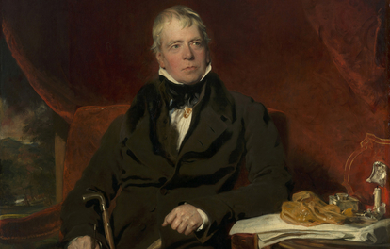
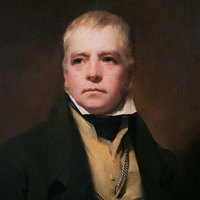
Sir Walter Scott, 1st Baronet, FRSE (15 August 1771– 21 September 1832) was a Scottish historical novelist, playwright and poet with many contemporary readers in Europe, Australia, and North America. Scott’s novels and poetry are still read, and many of his works remain classics of both English-language literature and of Scottish literature. Famous titles include Ivanhoe, Rob Roy, Old Mortality, The Lady of the Lake, Waverley, The Heart of Midlothian and The Bride of Lammermoor.

My poems are off the wall like me. I am not conventional and I'm ok with it. Some are dark n some are crazy n silly but each time I write it depends on the journey the unwritten words want to take me. Apologies if I offend. My poems are not about anyone unless I dedicate it. I have more but I'm saving a few for me It's there to enjoy so take what you get from it and be thankful we have words that seem poetic in their own right. Put them together and sometime magic happens
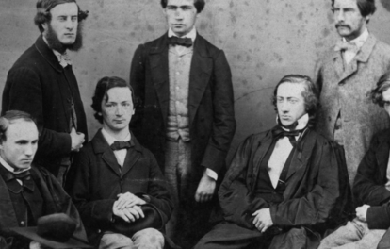
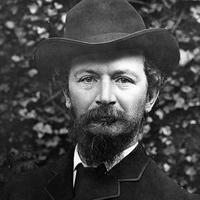
Algernon Charles Swinburne (5 April 1837– 10 April 1909) was an English poet, playwright, novelist, and critic. He wrote several novels and collections of poetry such as Poems and Ballads, and contributed to the famous Eleventh Edition of the Encyclopædia Britannica. A controversial figure at the time, Swinburne was a sado-masochist and alcoholic and was obsessed with the Middle Ages and lesbianism. Swinburne wrote about many taboo topics, such as lesbianism, cannibalism, sado-masochism, and anti-theism. His poems have many common motifs, such as the Ocean, Time, and Death. Several historical people are featured in his poems, such as Sappho ("Sapphics"), Anactoria ("Anactoria"), Jesus ("Hymn to Proserpine": Galilaee, La. “Galilean”) and Catullus ("To Catullus"). Biography Swinburne was born at 7 Chester Street, Grosvenor Place, London, on 5 April 1837. He was the eldest of six children born to Captain (later Admiral) Charles Henry Swinburne (1797–1877) and Lady Jane Henrietta, daughter of the 3rd Earl of Ashburnham. He grew up at East Dene in Bonchurch on the Isle of Wight. He attended Eton College (1849–53), where he first started writing poetry, and then Balliol College, Oxford (1856–60) with a brief hiatus when he was rusticated from the university in 1859 for having publicly supported the attempted assassination of Napoleon III by Felice Orsini. He returned in May 1860, though he never received a degree. He spent summer holidays at Capheaton Hall in Northumberland, the house of his grandfather, Sir John Swinburne, 6th Baronet (1762–1860), who had a famous library and was President of the Literary and Philosophical Society in Newcastle upon Tyne. Swinburne considered Northumberland to be his native county, an emotion reflected in poems like the intensely patriotic 'Northumberland’, 'Grace Darling’ and others. He enjoyed riding his pony across the moors (he was a daring horseman) 'through honeyed leagues of the northland border’, as he called the Scottish border in his Recollections. In the period 1857–60, Swinburne became one of Lady Pauline Trevelyan’s intellectual circle at Wallington Hall. After his grandfather’s death in 1860, he stayed with William Bell Scott in Newcastle. In 1861, Swinburne visited Menton on the French Riviera to recover from excessive use of alcohol, staying at the Villa Laurenti. From Menton, Swinburne travelled to Italy, where he journeyed extensively. In December 1862, Swinburne accompanied Scott and his guests, probably including Dante Gabriel Rossetti, on a trip to Tynemouth. Scott writes in his memoirs that, as they walked by the sea, Swinburne declaimed the as yet unpublished 'Hymn to Proserpine’ and 'Laus Veneris’ in his lilting intonation, while the waves 'were running the whole length of the long level sands towards Cullercoats and sounding like far-off acclamations’. At Oxford, Swinburne met several Pre-Raphaelites, including Dante Gabriel Rossetti. He also met William Morris. After leaving college, he lived in London and started an active writing career, where Rossetti was delighted with his 'little Northumbrian friend’, probably a reference to Swinburne’s diminutive height—he was just five foot four. Swinburne was an alcoholic and algolagniac and highly excitable. He liked to be flogged. His health suffered; and, in 1879 at the age of 42, he was taken into care by his friend, lawyer Theodore Watts, who looked after him for the rest of his life at The Pines, 11 Putney Hill, Putney SW15. Thereafter, he lost his youthful rebelliousness and developed into a figure of social respectability. It was said of Watts that he saved the man and killed the poet. Swinburne died at the Pines on 10 April 1909 at the age of 72 and was buried at St. Boniface Church, Bonchurch on the Isle of Wight. Reception Swinburne is considered a poet of the decadent school, although he perhaps professed to more vice than he actually indulged in to advertise his deviance– he spread a rumour that he had had sex with, then eaten, a monkey; Oscar Wilde stated that Swinburne was “a braggart in matters of vice, who had done everything he could to convince his fellow citizens of his homosexuality and bestiality without being in the slightest degree a homosexual or a bestialiser.” Many critics consider his mastery of vocabulary, rhyme and metre impressive, although he has also been criticised for his florid style and word choices that only fit the rhyme scheme rather than contributing to the meaning of the piece. He is the virtual star of the third volume of George Saintsbury’s famous History of English Prosody, and A. E. Housman, a more measured and even somewhat hostile critic, had great praise for his rhyming ability: [Swinburne] possessed an altogether unexampled command of rhyme, the chief enrichment of modern verse. The English language is comparatively poor in rhymes, and most English poets, when they have to rhyme more than two or three words together, betray their embarrassment. They betray it, for instance, when they write sonnets after the strict Petrarchian rule: the poetical inferiority of most English sonnets, if compared with what their own authors have achieved in other forms of verse, is largely though not entirely the result of this difficulty. [...] To Swinburne the sonnet was child’s play: the task of providing four rhymes was not hard enough, and he wrote long poems in which each stanza required eight or ten rhymes, and wrote them so that he never seemed to be saying anything for the rhyme’s sake. Swinburne’s work was once quite popular among undergraduates at Oxford and Cambridge, though today it has gone out of fashion. This is at least somewhat contextual, as it tends to mirror the popular and academic consensus regarding his work, although his Poems and Ballads, First Series and his Atalanta in Calydon have never been out of critical favour. Atalanta in Calydon in particular has been lauded as one of his best early works, written in 1865, before the passionate excesses of later works earned him a sordid reputation for blasphemy and depravity among contemporary critics. T. S. Eliot read Swinburne’s essays on the Shakespearean and Jonsonian dramatists in The Contemporaries of Shakespeare and The Age of Shakespeare and Swinburne’s books on Shakespeare and Jonson. Writing on Swinburne in 'The Sacred Wood: Essays on Poetry and Criticism’, Eliot said, of Swinburne, he had mastered his material, writing 'he is more reliable to them than Hazlitt, Coleridge, or Lamb: and his perception of relative values is almost always correct’. However, Eliot judged Swinburne did not master it to the extent of being able to take liberties with it, which is everything. Furthermore, Eliot disliked Swinburne’s prose, about which he wrote “the tumultuous outcry of adjectives, the headstrong rush of undisciplined sentences, are the index to the impatience and perhaps laziness of a disorderly mind.” Swinburne was nominated for the Nobel Prize in Literature every year from 1903 to 1907 and again in 1909. H. P. Lovecraft considered Swinburne “the only real poet in either England or America after the death of Mr. Edgar Allan Poe.” Work Swinburne’s poetic works include: Atalanta in Calydon (1865), Poems and Ballads (1866), Songs before Sunrise (1871), Poems and Ballads Second Series, (1878) Tristram of Lyonesse (1882), Poems and Ballads Third Series (1889), and the novel Lesbia Brandon (published posthumously in 1952). Poems and Ballads caused a sensation when it was first published, especially the poems written in homage of Sappho of Lesbos such as “Anactoria” and “Sapphics”: Moxon and Co. transferred its publication rights to John Camden Hotten. Other poems in this volume such as “The Leper,” “Laus Veneris,” and “St Dorothy” evoke a Victorian fascination with the Middle Ages, and are explicitly mediaeval in style, tone and construction. Also featured in this volume are “Hymn to Proserpine”, “The Triumph of Time” and “Dolores (Notre-Dame des Sept Douleurs)”. Swinburne devised the poetic form called the roundel, a variation of the French Rondeau form, and some were included in A Century of Roundels dedicated to Christina Rossetti. Swinburne wrote to Edward Burne-Jones in 1883: "I have got a tiny new book of songs or songlets, in one form and all manner of metres... just coming out, of which Miss Rossetti has accepted the dedication. I hope you and Georgie [his wife Georgiana, one of the MacDonald sisters] will find something to like among a hundred poems of nine lines each, twenty-four of which are about babies or small children". Opinions of these poems vary between those who find them captivating and brilliant, to those who find them merely clever and contrived. One of them, A Baby’s Death, was set to music by the English composer Sir Edward Elgar as the song Roundel: The little eyes that never knew Light. Swinburne was influenced by the work of William Shakespeare, Percy Bysshe Shelley, Catullus, William Morris, Dante Gabriel Rossetti, Robert Browning, Alfred Lord Tennyson, and Victor Hugo. While he was popular in England during his life, Swinburne’s influence has greatly decreased since his death. After the first Poems and Ballads, Swinburne’s later poetry was devoted more to philosophy and politics, including the unification of Italy, particularly in the volume Songs before Sunrise. He did not stop writing love poetry entirely, including his great epic-length poem, Tristram of Lyonesse, but its content is much less shocking. His versification, and especially his rhyming technique, remain in top form to the end. Verse drama The Queen Mother (1860) Rosamond (1860) Chastelard (1865) Bothwell (1874) Mary Stuart (1881) Marino Faliero (1885) Locrine (1887) The Sisters (1892) Rosamund, Queen of the Lombards (1899) Poetry Atalanta in Calydon (1865)† Poems and Ballads (1866) Songs Before Sunrise (1871) Songs of Two Nations (1875) Erechtheus (1876)† Poems and Ballads, Second Series (1878) Songs of the Springtides (1880) Studies in Song (1880) The Heptalogia, or the Seven against Sense. A Cap with Seven Bells (1880) Tristam of Lyonesse (1882) A Century of Roundels (1883) A Midsummer Holiday and Other Poems (1884) Poems and Ballads, Third Series (1889) Astrophel and Other Poems (1894) The Tale of Balen (1896) A Channel Passage and Other Poems (1904) ^† Although formally tragedies, Atlanta in Calydon and Erechtheus are traditionally included with “poetry”. Criticism William Blake: A Critical Essay (1868, new edition 1906) Under the Microscope (1872) George Chapman: A Critical Essay (1875) Essays and Studies (1875) A Note on Charlotte Brontë (1877) A Study of Shakespeare (1880) A Study of Victor Hugo (1886) A Study of Ben Johnson (1889) Studies in Prose and Poetry (1894) The Age of Shakespeare (1908) Shakespeare (1909) Major collections The poems of Algernon Charles Swinburne, 6 vols. London: Chatto & Windus, 1904. The Tragedies of Algernon Charles Swinburne, 5 vols. London: Chatto & Windus, 1905. The Complete Works of Algernon Charles Swinburne, ed. Sir Edmund Gosse and Thomas James Wise, 20 vols. Bonchurch Edition; London and New York: William Heinemann and Gabriel Wells, 1925-7. The Swinburne Letters, ed. Cecil Y. Lang, 6 vols. 1959-62. Ancestry References Wikipedia—https://en.wikipedia.org/wiki/Algernon_Charles_Swinburne
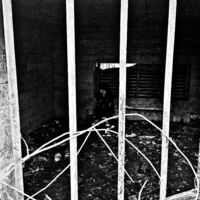
I write to voice my thoughts, convey my feelings and exercise my communicative abilities. Much of my inspiration comes from the darker places; both in the world and in my mind. I present my poems publicly in the hope that someone, somewhere, will find solace and affinity through my words. Comment is free.
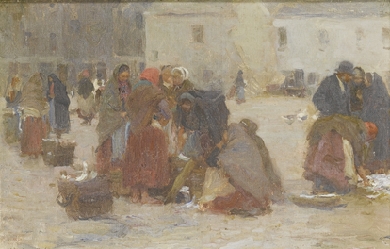
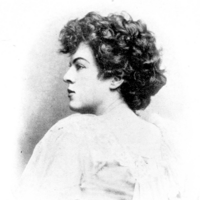
Dora Maria Sigerson Shorter (16 August 1866– 6 January 1918) was an Irish poet and sculptor, who after her marriage in 1895 wrote under the name Dora Sigerson Shorter. She was born in Dublin, Ireland, the daughter of George Sigerson, a surgeon and writer, and Hester (née Varian), also a writer. She was a major figure of the Irish Literary Revival, publishing many collections of poetry from 1893. Her friends included Katharine Tynan, Rose Kavanagh and Alice Furlong, writers and poets. In 1895 she married Clement King Shorter, an English journalist and literary critic. They lived together in London, until her death at age 51 from undisclosed causes.

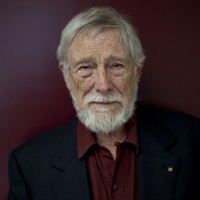
Gary Snyder (born May 8, 1930) is an American man of letters. Perhaps best known as a poet (often associated with the Beat Generation and the San Francisco Renaissance), he is also an essayist, lecturer, and environmental activist. He has been described as the "poet laureate of Deep Ecology". Snyder is a winner of a Pulitzer Prize for Poetry and the American Book Award. His work, in his various roles, reflects an immersion in both Buddhist spirituality and nature. Snyder has translated literature into English from ancient Chinese and modern Japanese. For many years, Snyder served as a faculty member at the University of California, Davis, and he also served for a time on the California Arts Council. Early life Gary Sherman Snyder was born in San Francisco, California to Harold and Lois Hennessy Snyder. Snyder is of German, Scots-Irish, and English ancestry. His family, impoverished by the Great Depression, moved to King County, Washington, when he was two years old. There they tended dairy cows, kept laying hens, had a small orchard, and made cedar-wood shingles, until moving to Portland, Oregon ten years later. At the age of seven, Snyder was laid up for four months by an accident. "So my folks brought me piles of books from the Seattle Public Library," he recalled in interview, "and it was then I really learned to read and from that time on was voracious — I figure that accident changed my life. At the end of four months, I had read more than most kids do by the time they're eighteen. And I didn't stop." Also during his ten childhood years in Washington, Snyder became aware of the presence of the Coast Salish people and developed an interest in the Native American peoples in general and their traditional relationship with nature. In 1942, following his parents' divorce, Snyder moved to Portland, Oregon with his mother and his younger sister, Anthea. Their mother, Lois Snyder Hennessy (born Wilkey), worked during this period as a reporter for The Oregonian. One of Gary's boyhood jobs was as a newspaper copy boy, also at the Oregonian. Also, during his teen years, he attended Lincoln High School, worked as a camp counselor, and went mountain climbing with the Mazamas youth group. Climbing remained an interest of his, especially during his twenties and thirties. In 1947, he started attending Reed College on a scholarship. Here he met, and for a time, roomed with the education author Carl Proujan and Philip Whalen and Lew Welch. At Reed, Snyder published his first poems in a student journal. He also spent the summer of 1948 working as a seaman. He joined the now defunct Marine Cooks and Stewards union to get this job, and would later work as a seaman in the mid-1950s to gain experience of other cultures in port cities. Snyder married Alison Gass in 1950; they separated after seven months, and divorced in 1952. While attending Reed, Snyder did folklore research on the Warm Springs Indian Reservation in central Oregon. He graduated with a dual degree in anthropology and literature in 1951. He spent the following few summers working as a timber scaler at Warm Springs, developing relationships with its people that were less rooted in academia. This experience formed the basis for some of his earliest published poems (including "A Berry Feast"), later collected in the book The Back Country. He also encountered the basic ideas of Buddhism and, through its arts, some of the Far East's traditional attitudes toward nature. He went to Indiana University with a graduate fellowship to study anthropology. (Snyder also began practicing self-taught Zen meditation.) He left after a single semester to return to San Francisco and to 'sink or swim as a poet'. Snyder worked for two summers in the North Cascades in Washington as a fire lookout, on Crater Mountain in 1952 and Sourdough Mountain in 1953 (both locations on the upper Skagit River). His attempts to get another lookout stint in 1954 (at the peak of McCarthyism), however, failed. He had been barred from working for the government, due to his association with the Marine Cooks and Stewards. Instead, he went back to Warm Springs to work in logging as a chokersetter (fastening cables to logs). This experience contributed to his Myths and Texts and the essay Ancient Forests of the Far West. The Beats Back in San Francisco, Snyder lived with Whalen, who shared his growing interest in Zen. Snyder's reading of the writings of D.T. Suzuki had in fact been a factor in his decision not to continue as a graduate-student in anthropology, and in 1953 he enrolled at the University of California, Berkeley to study Asian culture and languages. He studied ink and wash painting under Chiura Obata and Tang Dynasty poetry under Ch'en Shih-hsiang. Snyder continued to spend summers working in the forests, including one summer as a trail-builder in Yosemite. He spent some months in 1955 and 1956 living in a cabin (which he dubbed "Marin-an") outside Mill Valley, California with Jack Kerouac. It was also at this time that Snyder was an occasional student at the American Academy of Asian Studies, where Saburō Hasegawa and Alan Watts, among others, were teaching. Hasegawa introduced Snyder to the treatment of landscape painting as a meditative practice. This inspired Snyder to attempt something equivalent in poetry, and with Hasegawa's encouragement, he began work on Mountains and Rivers without End, which would be completed and published forty years later. During these years, Snyder was writing and collecting his own work, as well as embarking on the translation of the "Cold Mountain" poems by the 8th-century Chinese recluse Han Shan; this work appeared in chapbook-form in 1969, under the title Riprap & Cold Mountain Poems. Snyder met Allen Ginsberg when the latter sought Snyder out on the recommendation of Kenneth Rexroth. Then, through Ginsberg, Snyder and Kerouac came to know each other. This period provided the materials for Kerouac's novel The Dharma Bums, and Snyder was the inspiration for the novel's main character, Japhy Ryder, in the same way Neal Cassady had inspired Dean Moriarty in On the Road. As the large majority of people in the Beat movement had urban backgrounds, writers like Ginsberg and Kerouac found Snyder, with his backcountry and manual-labor experience and interest in things rural, a refreshing and almost exotic individual. Lawrence Ferlinghetti later referred to Snyder as 'the Thoreau of the Beat Generation'. Snyder read his poem "A Berry Feast" at the poetry reading at the Six Gallery in San Francisco (October 7, 1955) that heralded what was to become known as the San Francisco Renaissance. This also marked Snyder's first involvement with the Beats, although he was not a member of the original New York circle, but rather entered the scene through his association with Kenneth Rexroth. As recounted in Kerouac's Dharma Bums, even at age 25 Snyder felt he could have a role in the fateful future meeting of West and East. Snyder's first book, Riprap, which drew on his experiences as a forest lookout and on the trail-crew in Yosemite, was published in 1959. Japan and India Independently, some of the Beats, including Philip Whalen, had become interested in Zen, but Snyder was one of the more serious scholars of the subject among them, preparing in every way he could think of for eventual study in Japan. In 1955, the First Zen Institute of America offered him a scholarship for a year of Zen training in Japan, but the State Department refused to issue him a passport, informing him that "it has been alleged you are a Communist." A subsequent District of Columbia Court of Appeals ruling forced a change in policy, and Snyder got his passport. In the end, his expenses were paid by Ruth Fuller Sasaki, for whom he was supposed to work; but initially he served as personal attendant and English tutor to Zen abbot Miura Isshu, at Rinko-in, a temple in Shokoku-ji in Kyoto, where Dwight Goddard and R. H. Blyth had preceded him. Mornings, after zazen, sutra chanting, and chores for Miura, he took Japanese classes, bringing his spoken Japanese up to a level sufficient for kōan study. He developed a friendship with Philip Yampolsky, who took him around Kyoto. In early July 1955, he took refuge and requested to become Miura's disciple, thus formally becoming a Buddhist. He returned to California via the Persian Gulf, Turkey, Sri Lanka and various Pacific Islands, in 1958, voyaging as a crewman in the engine room on the oil freighter Sappa Creek, and took up residence at Marin-an again. He turned one room into a zendo, with about six regular participants. In early June, he met the poet Joanne Kyger. She became his girlfriend, and eventually his wife. In 1959, he shipped for Japan again, where he rented a cottage outside Kyoto. He became the first foreign disciple of Oda Sesso Roshi, the new abbot of Daitoku-ji. He married Kyger on February 28, 1960, immediately after her arrival, which Sasaki insisted they do, if they were to live together and be associated with the First Zen Institute of America. Snyder and Joanne Kyger were married from 1960 to 1965. During the period between 1956 and 1969, Snyder went back and forth between California and Japan, studying Zen, working on translations with Ruth Fuller Sasaki, and finally living for a while with a group of other people on the small, volcanic island of Suwanosejima. His previous study of written Chinese assisted his immersion in the Zen tradition (with its roots in Tang Dynasty China) and enabled him to take on certain professional projects while he was living in Japan. Snyder received the Zen precepts and a dharma name (Chofu, "Listen to the Wind"), and lived sometimes as a de facto monk, but never registered to become a priest and planned eventually to return to the United States to 'turn the wheel of the dharma'. During this time, he published a collection of his poems from the early to mid '50s, Myths & Texts (1960), and Six Sections from Mountains and Rivers Without End (1965). This last was the beginning of a project that he was to continue working on until the late 1990s. Much of Snyder's poetry expresses experiences, environments, and insights involved with the work he has done for a living: logger, fire-lookout, steam-freighter crew, translator, carpenter, and itinerant poet, among other things. During his years in Japan, Snyder was also initiated into Shugendo, a form of ancient Japanese animism, (see also Yamabushi). In the early 1960s he traveled for six months through India with his wife Joanne, Allen Ginsberg, and Peter Orlovsky. Snyder and Joanne Kyger separated soon after a trip to India, and divorced in 1965. Dharma Bums In the 1950s, Snyder took part in the rise of a strand of Buddhist anarchism emerging from the Beat movement. Snyder was the inspiration for the character Japhy Rider in Jack Kerouac's novel The Dharma Bums (1958). Snyder had spent considerable time in Japan studying Zen Buddhism, and in 1961 published an essay, Buddhist Anarchism, where he described the connection he saw between these two traditions, originating in different parts of the world: "The mercy of the West has been social revolution; the mercy of the East has been individual insight into the basic self/void." He advocated "using such means as civil disobedience, outspoken criticism, protest, pacifism, voluntary poverty and even gentle violence" and defended "the right of individuals to smoke ganja, eat peyote, be polygymous, polyandrous or homosexual" which he saw as being banned by "the Judaeo-Capitalist-Christian-Marxist West". Kitkitdizze In 1966, Snyder joined Allen Ginsberg, Zentatsu Richard Baker, Roshi of the San Francisco Zen Center, and Donald Walters, a.k.a. "Swami Kriyananda," to buy 100 acres (0.40 km2) in the Sierra foothills, north of Nevada City, California. In 1970, this would become his home, with the Snyder family's portion being named Kitkitdizze. Snyder spent the summers of 1967 and 1968 with a group of Japanese back-to-the-land drop-outs known as "the Tribe" on Suwanosejima (a small Japanese island in the East China Sea), where they combed the beaches, gathered edible plants, and fished. On the island, on August 6, 1967, he married Masa Uehara, whom he had met in Osaka a year earlier. In 1968, they moved to California with their infant son, Kai (born April 1968). Their second son, Gen, was born a year later. In 1971, they moved to the San Juan Ridge in the foothills of the Sierra Nevada of Northern California, near the South Yuba River, where they and friends built a house that drew on rural-Japanese and Native-American architectural ideas. In 1967 his book The Back Country appeared, again mainly a collection of poems stretching back over about fifteen years. Snyder devoted a section at the end of the book to his translations of eighteen poems by Kenji Miyazawa. Later life and writings Regarding Wave appeared in 1969, a stylistic departure offering poems that were more emotional, metaphoric, and lyrical. From the late 1960s, the content of Snyder's poetry increasingly had to do with family, friends, and community. He continued to publish poetry throughout the 1970s, much of it reflecting his re-immersion in life on the American continent and his involvement in the back-to-the-land movement in the Sierra foothills. His 1974 book Turtle Island, titled after a Native American name for the North American continent, won a Pulitzer Prize. It also influenced numerous West Coast Generation X writers, including Alex Steffen, Bruce Barcott and Mark Morford. His 1983 book Axe Handles, won an American Book Award. Snyder wrote numerous essays setting forth his views on poetry, culture, social experimentation, and the environment. Many of these were collected in Earth House Hold (1969), The Old Ways (1977), The Real Work (1980), The Practice of the Wild (1990), A Place in Space (1995), and The Gary Snyder Reader (1999). In 1979, Snyder published He Who Hunted Birds in His Father's Village: The Dimensions of a Haida Myth, based on his Reed thesis. Snyder's journals from his travel in India in the mid-1960s appeared in 1983 under the title Passage Through India. In these, his wide-ranging interests in cultures, natural history, religions, social critique, contemporary America, and hands-on aspects of rural life, as well as his ideas on literature, were given full-blown articulation. In 1986, Snyder became a professor in the writing-program at the University of California, Davis. Snyder is now professor emeritus of English. Snyder was married to Uehara for twenty-two years; the couple divorced in 1989. Snyder married Carole Lynn Koda (October 3, 1947 – June 29, 2006), who would write Homegrown: Thirteen brothers and sisters, a century in America, in 1991, and remained married to her until her death of cancer. She had been born in the third generation of a successful Japanese-American farming family, noted for its excellent rice. She shared Buddhism, extensive travels, and work with Snyder, and performed independent work as a naturalist. As Snyder's involvement in environmental issues and his teaching grew, he seemed to move away from poetry for much of the 1980s and early 1990s. However, in 1996 he published the complete Mountains and Rivers Without End, a mixture of the lyrical and epic modes celebrating the act of inhabitation on a specific place on the planet. This work was written over a 40-year period. It has been translated into Japanese and French. In 2004 Snyder published Danger on Peaks, his first collection of new poems in twenty years. Snyder was awarded the Levinson Prize from the journal Poetry, the American Poetry Society Shelley Memorial Award (1986), was inducted into the American Academy of Arts and Letters (1987), and won the 1997 Bollingen Prize for Poetry and, that same year, the John Hay Award for Nature Writing. Snyder also has the distinction of being the first American to receive the Buddhism Transmission Award (for 1998) from the Japan-based Bukkyo Dendo Kyokai Foundation. For his ecological and social activism, Snyder was named as one of the 100 visionaries selected in 1995 by Utne Reader. Snyder's life and work was celebrated in John J. Healy's 2010 documentary The Practice of the Wild. The film, which debuted at the 53rd San Francisco International Film Festival, features wide-ranging, running conversations between Snyder and poet, writer and longtime colleague Jim Harrison, filmed mostly on the Hearst Ranch in San Simeon, California. The film also shows archival photographs and film of Snyder's life. Poetic work Gary Snyder uses mainly common speech-patterns as the basis for his lines, though his style has been noted for its "flexibility" and the variety of different forms his poems have taken. He does not typically use conventional meters nor intentional rhyme. "Love and respect for the primitive tribe, honour accorded the Earth, the escape from city and industry into both the past and the possible, contemplation, the communal", such, according to Glyn Maxwell, is the awareness and commitment behind the specific poems. The author and editor Stewart Brand once wrote: "Gary Snyder's poetry addresses the life-planet identification with unusual simplicity of style and complexity of effect." According to Jody Norton, this simplicity and complexity derives from Snyder's use of natural imagery (geographical formations, flora, and fauna)in his poems. Such imagery can be both sensual at a personal level yet universal and generic in nature. In the 1968 poem "Beneath My Hand and Eye the Distant Hills, Your Body," the author compares the intimate experience of a lover's caress with the mountains, hills, cinder cones, and craters of the Uintah Mountains. Readers become explorers on both a very private level as well as a very public and grand level. A simplistic touch becoming a very complex interaction occurring at multiple levels. This is the effect Snyder intended. In an interview with Faas, he states." There is a direction which is very beautiful, and that's the direction of the organism being less and less locked into itself, less and less locked into its own body structure and its relatively inadequate sense organs, towards a state where the organism can actually go out from itself and share itself with others." Snyder has always maintained that his personal sensibility arose from his interest in Native Americans and their involvement with nature and knowledge of it; indeed, their ways seemed to resonate with his own. And he has sought something akin to this through Buddhist practices, Yamabushi initiation, and other experiences and involvements. However, since his youth he has been quite literate, and he has written about his appreciation of writers of similar sensibilities, like D. H. Lawrence, William Butler Yeats, and some of the great ancient Chinese poets. William Carlos Williams was another influence, especially on Snyder's earliest published work. Starting in high school, Snyder read and loved the work of Robinson Jeffers, his predecessor in poetry of the landscape of the American West; but, whereas Jeffers valued nature over humankind, Snyder saw humankind as part of nature. Snyder commented in interview "I have some concerns that I'm continually investigating that tie together biology, mysticism, prehistory, general systems theory". Snyder argues that poets, and humans in general, need to adjust to very long timescales, especially when judging the consequences of their actions. His poetry examines the gap between nature and culture so as to point to ways in which the two can be more closely integrated. In 2004, receiving the Masaoka Shiki International Haiku Awards Grand Prize, Snyder highlighted traditional ballads and folk songs, Native American songs and poems, William Blake, Walt Whitman, Jeffers, Ezra Pound, Noh drama, Zen aphorisms, Federico García Lorca, and Robert Duncan as significant influences on his poetry, but added, "the influence from haiku and from the Chinese is, I think, the deepest." Romanticism Snyder is among those writers who have sought to dis-entrench conventional thinking about primitive peoples that has viewed them as simple-minded, ignorantly superstitious, brutish, and prone to violent emotionalism. In the 1960s Snyder developed a "neo-tribalist" view akin to the "post-modernist" theory of French Sociologist Michel Maffesoli. The "re-tribalization" of the modern, mass-society world envisioned by Marshall McLuhan, with all of the ominous, dystopian possibilities that McLuhan warned of, subsequently accepted by many modern intellectuals, is not the future that Snyder expects or works toward. Snyder's is a positive interpretation of the tribe and of the possible future. Todd Ensign describes Snyder's interpretation as blending ancient tribal beliefs and traditions, philosophy, physicality, and nature with politics to create his own form of Postmodern-environmentalism. Snyder rejects the perspective which portrays nature and humanity in direct opposition to one another. Instead, he chooses to write from multiple viewpoints. He purposely sets out to bring about change on the emotional, physical, and political levels by emphasizing the ecological problems faced by today's society. Beat Gary Snyder is widely regarded as a member of the Beat Generation circle of writers: he was one of the poets that read at the famous Six Gallery event, and was written about in one of Kerouac's most popular novels, The Dharma Bums. Some critics argue that Snyder's connection with the Beats is exaggerated and that he might better be regarded as a member of the West-Coast group the San Francisco Renaissance, which developed independently. Snyder himself has some reservations about the label "Beat", but does not appear to have any strong objection to being included in the group. He often talks about the Beats in the first person plural, referring to the group as "we" and "us". A quotation from a 1974 interview at the University of North Dakota Writers Conference (published in The Beat Vision): I never did know exactly what was meant by the term 'The Beats', but let's say that the original meeting, association, comradeship of Allen [Ginsberg], myself, Michael [McClure], Lawrence [Ferlinghetti], Philip Whalen, who's not here, Lew Welch, who's dead, Gregory [Corso], for me, to a somewhat lesser extent (I never knew Gregory as well as the others) did embody a criticism and a vision which we shared in various ways, and then went our own ways for many years. Where we began to come really close together again, in the late '60s, and gradually working toward this point, it seems to me, was when Allen began to take a deep interest in Oriental thought and then in Buddhism which added another dimension to our levels of agreement; and later through Allen's influence, Lawrence began to draw toward that; and from another angle, Michael and I after the lapse of some years of contact, found our heads very much in the same place, and it's very curious and interesting now; and Lawrence went off in a very political direction for a while, which none of us had any objection with, except that wasn't my main focus. It's very interesting that we find ourselves so much on the same ground again, after having explored divergent paths; and find ourselves united on this position of powerful environmental concern, critique of the future of the individual state, and an essentially shared poetics, and only half-stated but in the background very powerfully there, a basic agreement on some Buddhist type psychological views of human nature and human possibilities. Snyder has also commented "The term Beat is better used for a smaller group of writers ... the immediate group around Allen Ginsberg and Jack Kerouac, plus Gregory Corso and a few others. Many of us ... belong together in the category of the San Francisco Renaissance. ... Still, beat can also be defined as a particular state of mind ... and I was in that mind for a while". Bibliography * Myths & Texts (1960) * Six Sections from Mountains and Rivers Without End (1965) * The Back Country (1967) * Riprap and Cold Mountain Poems (1969) * Regarding Wave (1969) * Earth House Hold (1969) * Turtle Island (1974) * The Old Ways (1977) * He Who Hunted Birds in His Father's Village: The Dimensions of a Haida Myth (1979) * The Real Work: Interviews & Talks 1964-1979 (1980) * Axe Handles (1983) * Passage Through India (1983) * Left Out in the Rain (1988) * The Practice of the Wild (1990) * No Nature: New and Selected Poems (1992) * A Place in Space (1995) * narrator of the audio book version of Kazuaki Tanahashi's Moon in a Dewdrop from Dōgen's Shōbōgenzō * Mountains and Rivers Without End (1996) * The Gary Snyder Reader: Prose, Poetry, and Translations (1999) * The High Sierra of California, with Tom Killion (2002) * Look Out: a Selection of Writings (November 2002) * Danger on Peaks (2005) * Back on the Fire: Essays (2007) * The Selected Letters of Allen Ginsberg and Gary Snyder, 1956-1991"(2009) * Tamalpais Walking, with Tom Killion (2009) * The Etiquette of Freedom, with Jim Harrison (2010) film by Will Hearst with book edited by Paul Ebenkamp * Nobody Home: Writing, Buddhism, and Living in Places, with Julia Martin, Trinity University Press (2014). * This Present Moment (April 2015) * Distant Neighbors: The Selected Letters of Wendell Berry and Gary Snyder (May 2015) * The Great Clod: Notes and Memories on the Natural History of China and Japan (March 2016) References Wikipedia—https://en.wikipedia.org/wiki/Gary_Snyder


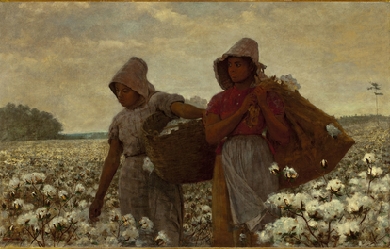


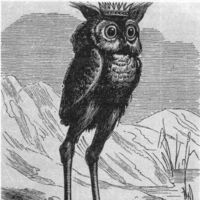
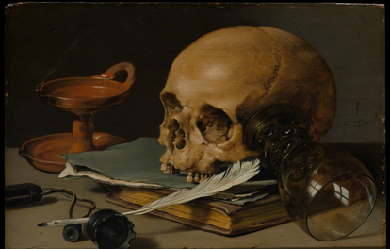

.jpg)





